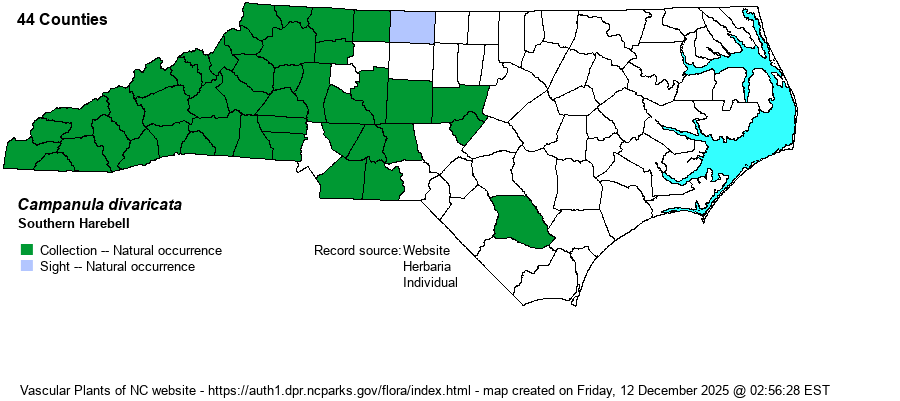| Author | Michaux | |
| Distribution | Throughout the Mountains and western Piedmont; somewhat scattered in the central Piedmont and into the southeastern Piedmont; east to Rockingham, Chatham, Lee, and Anson counties. Disjunct record from Bladen County in the Coastal Plain (ledge near Cape Fear River).
This is a central and southern Appalachian species, ranging from western MD and WV, south to central AL. | |
| Abundance | Common and widespread in the Mountains and foothills; uncommon to infrequent into the central Piedmont, and rare in the southeastern portions. As this is clearly an S5 species in NC, the Global Rank assigned by NatureServe needs to be G5 instead of G4. | |
| Habitat | This is a rock-based species -- occurring on cliffs, crevices of other rock outcrops such as rocky summits, and on talus slopes. It usually is found in sunny to partly sunny places, not in heavy shade of forest interior rock crevices. |
| Phenology | Blooms from July to October, and fruits from September to frost. | |
| Identification | This is a quite familiar species to biologists working the western half of the state, especially in the mountains. This is a slender herb, with a few branches, growing to about 1.5 feet tall. It has alternate leaves, linear to lanceolate, about 2 inches long and only 1/2-inch wide at most, quite noticeably serrated. The inflorescence is an open panicle of fairly numerous flowers, each one bright to rich blue and dangling downward. The flower is bell-shaped and about 1/3-inch long. The downward-facing bright blue "bells" are easily noted in the field and should avoid confusion with any other species. | |
| Taxonomic Comments | None
| |
| Other Common Name(s) | Appalachian Bellflower, Panicled Bellflower, Small Bonny Bellflower | |
| State Rank | S5 | |
| Global Rank | G4 [G5] | |
| State Status | | |
| US Status | | |
| USACE-agcp | | |
| USACE-emp | | |

